Zhiming Li
Investigating Training Data Detection in AI Coders
Jul 23, 2025Abstract:Recent advances in code large language models (CodeLLMs) have made them indispensable tools in modern software engineering. However, these models occasionally produce outputs that contain proprietary or sensitive code snippets, raising concerns about potential non-compliant use of training data, and posing risks to privacy and intellectual property. To ensure responsible and compliant deployment of CodeLLMs, training data detection (TDD) has become a critical task. While recent TDD methods have shown promise in natural language settings, their effectiveness on code data remains largely underexplored. This gap is particularly important given code's structured syntax and distinct similarity criteria compared to natural language. To address this, we conduct a comprehensive empirical study of seven state-of-the-art TDD methods on source code data, evaluating their performance across eight CodeLLMs. To support this evaluation, we introduce CodeSnitch, a function-level benchmark dataset comprising 9,000 code samples in three programming languages, each explicitly labeled as either included or excluded from CodeLLM training. Beyond evaluation on the original CodeSnitch, we design targeted mutation strategies to test the robustness of TDD methods under three distinct settings. These mutation strategies are grounded in the well-established Type-1 to Type-4 code clone detection taxonomy. Our study provides a systematic assessment of current TDD techniques for code and offers insights to guide the development of more effective and robust detection methods in the future.
Resolving Latency and Inventory Risk in Market Making with Reinforcement Learning
May 18, 2025Abstract:The latency of the exchanges in Market Making (MM) is inevitable due to hardware limitations, system processing times, delays in receiving data from exchanges, the time required for order transmission to reach the market, etc. Existing reinforcement learning (RL) methods for Market Making (MM) overlook the impact of these latency, which can lead to unintended order cancellations due to price discrepancies between decision and execution times and result in undesired inventory accumulation, exposing MM traders to increased market risk. Therefore, these methods cannot be applied in real MM scenarios. To address these issues, we first build a realistic MM environment with random delays of 30-100 milliseconds for order placement and market information reception, and implement a batch matching mechanism that collects orders within every 500 milliseconds before matching them all at once, simulating the batch auction mechanisms adopted by some exchanges. Then, we propose Relaver, an RL-based method for MM to tackle the latency and inventory risk issues. The three main contributions of Relaver are: i) we introduce an augmented state-action space that incorporates order hold time alongside price and volume, enabling Relaver to optimize execution strategies under latency constraints and time-priority matching mechanisms, ii) we leverage dynamic programming (DP) to guide the exploration of RL training for better policies, iii) we train a market trend predictor, which can guide the agent to intelligently adjust the inventory to reduce the risk. Extensive experiments and ablation studies on four real-world datasets demonstrate that \textsc{Relaver} significantly improves the performance of state-of-the-art RL-based MM strategies across multiple metrics.
FairSkin: Fair Diffusion for Skin Disease Image Generation
Oct 31, 2024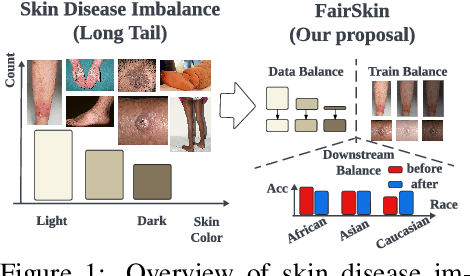

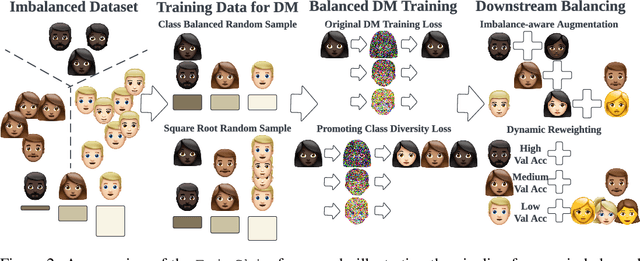

Abstract:Image generation is a prevailing technique for clinical data augmentation for advancing diagnostic accuracy and reducing healthcare disparities. Diffusion Model (DM) has become a leading method in generating synthetic medical images, but it suffers from a critical twofold bias: (1) The quality of images generated for Caucasian individuals is significantly higher, as measured by the Frechet Inception Distance (FID). (2) The ability of the downstream-task learner to learn critical features from disease images varies across different skin tones. These biases pose significant risks, particularly in skin disease detection, where underrepresentation of certain skin tones can lead to misdiagnosis or neglect of specific conditions. To address these challenges, we propose FairSkin, a novel DM framework that mitigates these biases through a three-level resampling mechanism, ensuring fairer representation across racial and disease categories. Our approach significantly improves the diversity and quality of generated images, contributing to more equitable skin disease detection in clinical settings.
LLMs for Relational Reasoning: How Far are We?
Jan 17, 2024Abstract:Large language models (LLMs) have revolutionized many areas (e.g. natural language processing, software engineering, etc.) by achieving state-of-the-art performance on extensive downstream tasks. Aiming to achieve robust and general artificial intelligence, there has been a surge of interest in investigating the reasoning ability of the LLMs. Whereas the textual and numerical reasoning benchmarks adopted by previous works are rather shallow and simple, it is hard to conclude that the LLMs possess strong reasoning ability by merely achieving positive results on these benchmarks. Recent efforts have demonstrated that the LLMs are poor at solving sequential decision-making problems that require common-sense planning by evaluating their performance on the reinforcement learning benchmarks. In this work, we conduct an in-depth assessment of several state-of-the-art LLMs' reasoning ability based on the inductive logic programming (ILP) benchmark, which is broadly recognized as a representative and challenging measurement for evaluating logic program induction/synthesis systems as it requires inducing strict cause-effect logic to achieve robust deduction on independent and identically distributed (IID) and out-of-distribution (OOD) test samples. Our evaluations illustrate that compared with the neural program induction systems which are much smaller in model size, the state-of-the-art LLMs are much poorer in terms of reasoning ability by achieving much lower performance and generalization using either natural language prompting or truth-value matrix prompting.
Cross-View Graph Consistency Learning for Invariant Graph Representations
Nov 20, 2023Abstract:Graph representation learning is fundamental for analyzing graph-structured data. Exploring invariant graph representations remains a challenge for most existing graph representation learning methods. In this paper, we propose a cross-view graph consistency learning (CGCL) method that learns invariant graph representations for link prediction. First, two complementary augmented views are derived from an incomplete graph structure through a bidirectional graph structure augmentation scheme. This augmentation scheme mitigates the potential information loss that is commonly associated with various data augmentation techniques involving raw graph data, such as edge perturbation, node removal, and attribute masking. Second, we propose a CGCL model that can learn invariant graph representations. A cross-view training scheme is proposed to train the proposed CGCL model. This scheme attempts to maximize the consistency information between one augmented view and the graph structure reconstructed from the other augmented view. Furthermore, we offer a comprehensive theoretical CGCL analysis. This paper empirically and experimentally demonstrates the effectiveness of the proposed CGCL method, achieving competitive results on graph datasets in comparisons with several state-of-the-art algorithms.
Logic-guided Deep Reinforcement Learning for Stock Trading
Oct 09, 2023



Abstract:Deep reinforcement learning (DRL) has revolutionized quantitative finance by achieving excellent performance without significant manual effort. Whereas we observe that the DRL models behave unstably in a dynamic stock market due to the low signal-to-noise ratio nature of the financial data. In this paper, we propose a novel logic-guided trading framework, termed as SYENS (Program Synthesis-based Ensemble Strategy). Different from the previous state-of-the-art ensemble reinforcement learning strategy which arbitrarily selects the best-performing agent for testing based on a single measurement, our framework proposes regularizing the model's behavior in a hierarchical manner using the program synthesis by sketching paradigm. First, we propose a high-level, domain-specific language (DSL) that is used for the depiction of the market environment and action. Then based on the DSL, a novel program sketch is introduced, which embeds human expert knowledge in a logical manner. Finally, based on the program sketch, we adopt the program synthesis by sketching a paradigm and synthesizing a logical, hierarchical trading strategy. We evaluate SYENS on the 30 Dow Jones stocks under the cash trading and the margin trading settings. Experimental results demonstrate that our proposed framework can significantly outperform the baselines with much higher cumulative return and lower maximum drawdown under both settings.
FAIRER: Fairness as Decision Rationale Alignment
Jun 27, 2023Abstract:Deep neural networks (DNNs) have made significant progress, but often suffer from fairness issues, as deep models typically show distinct accuracy differences among certain subgroups (e.g., males and females). Existing research addresses this critical issue by employing fairness-aware loss functions to constrain the last-layer outputs and directly regularize DNNs. Although the fairness of DNNs is improved, it is unclear how the trained network makes a fair prediction, which limits future fairness improvements. In this paper, we investigate fairness from the perspective of decision rationale and define the parameter parity score to characterize the fair decision process of networks by analyzing neuron influence in various subgroups. Extensive empirical studies show that the unfair issue could arise from the unaligned decision rationales of subgroups. Existing fairness regularization terms fail to achieve decision rationale alignment because they only constrain last-layer outputs while ignoring intermediate neuron alignment. To address the issue, we formulate the fairness as a new task, i.e., decision rationale alignment that requires DNNs' neurons to have consistent responses on subgroups at both intermediate processes and the final prediction. To make this idea practical during optimization, we relax the naive objective function and propose gradient-guided parity alignment, which encourages gradient-weighted consistency of neurons across subgroups. Extensive experiments on a variety of datasets show that our method can significantly enhance fairness while sustaining a high level of accuracy and outperforming other approaches by a wide margin.
GALOIS: Boosting Deep Reinforcement Learning via Generalizable Logic Synthesis
May 27, 2022



Abstract:Despite achieving superior performance in human-level control problems, unlike humans, deep reinforcement learning (DRL) lacks high-order intelligence (e.g., logic deduction and reuse), thus it behaves ineffectively than humans regarding learning and generalization in complex problems. Previous works attempt to directly synthesize a white-box logic program as the DRL policy, manifesting logic-driven behaviors. However, most synthesis methods are built on imperative or declarative programming, and each has a distinct limitation, respectively. The former ignores the cause-effect logic during synthesis, resulting in low generalizability across tasks. The latter is strictly proof-based, thus failing to synthesize programs with complex hierarchical logic. In this paper, we combine the above two paradigms together and propose a novel Generalizable Logic Synthesis (GALOIS) framework to synthesize hierarchical and strict cause-effect logic programs. GALOIS leverages the program sketch and defines a new sketch-based hybrid program language for guiding the synthesis. Based on that, GALOIS proposes a sketch-based program synthesis method to automatically generate white-box programs with generalizable and interpretable cause-effect logic. Extensive evaluations on various decision-making tasks with complex logic demonstrate the superiority of GALOIS over mainstream baselines regarding the asymptotic performance, generalizability, and great knowledge reusability across different environments.
Unveiling Project-Specific Bias in Neural Code Models
Jan 19, 2022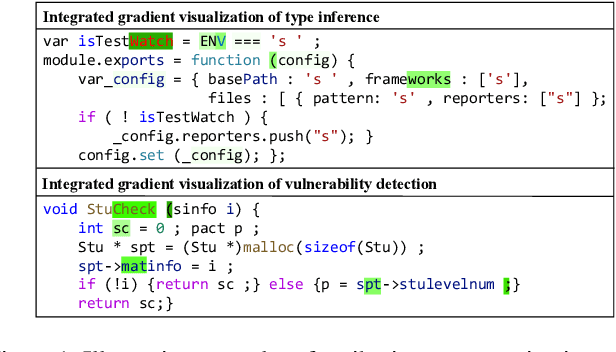

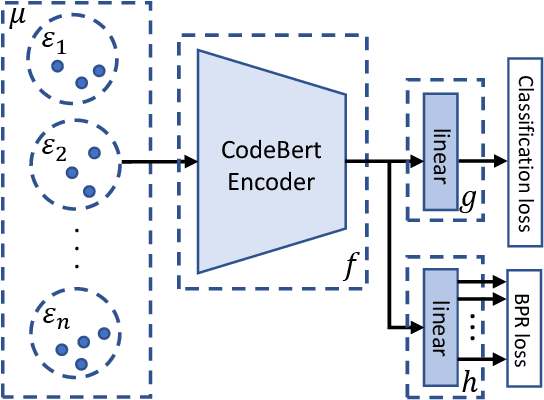

Abstract:Neural code models have introduced significant improvements over many software analysis tasks like type inference, vulnerability detection, etc. Despite the good performance of such models under the common intra-project independent and identically distributed (IID) training and validation setting, we observe that they usually fail to generalize to real-world inter-project out-of-distribution (OOD) setting. In this work, we show that such phenomenon is caused by model heavily relying on project-specific, ungeneralizable tokens like self-defined variable and function names for downstream prediction, and we formulate it as the project-specific bias learning behavior. We propose a measurement to interpret such behavior, termed as Cond-Idf, which combines co-occurrence probability and inverse document frequency to measure the level of relatedness of token with label and its project-specificness. The approximation indicates that without proper regularization with prior knowledge, model tends to leverage spurious statistical cues for prediction. Equipped with these observations, we propose a bias mitigation mechanism Batch Partition Regularization (BPR) that regularizes model to infer based on proper behavior by leveraging latent logic relations among samples. Experimental results on two deep code benchmarks indicate that BPR can improve both inter-project OOD generalization and adversarial robustness while not sacrificing accuracy on IID data.
Cross-Lingual Adaptation for Type Inference
Jul 01, 2021
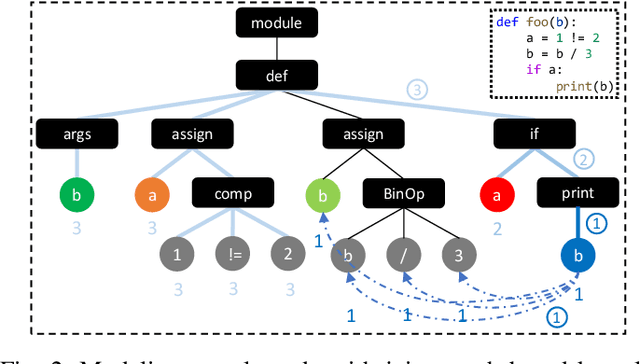
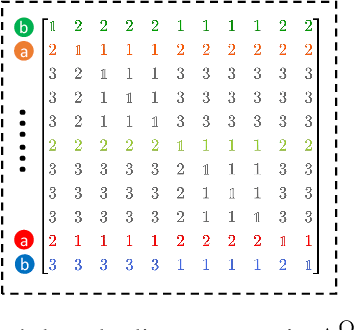
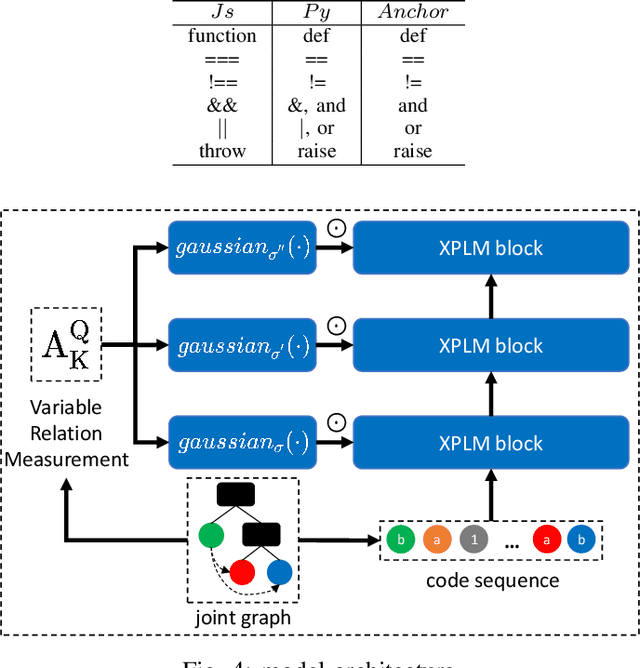
Abstract:Deep learning-based techniques have been widely applied to the program analysis tasks, in fields such as type inference, fault localization, and code summarization. Hitherto deep learning-based software engineering systems rely thoroughly on supervised learning approaches, which require laborious manual effort to collect and label a prohibitively large amount of data. However, most Turing-complete imperative languages share similar control- and data-flow structures, which make it possible to transfer knowledge learned from one language to another. In this paper, we propose cross-lingual adaptation of program analysis, which allows us to leverage prior knowledge learned from the labeled dataset of one language and transfer it to the others. Specifically, we implemented a cross-lingual adaptation framework, PLATO, to transfer a deep learning-based type inference procedure across weakly typed languages, e.g., Python to JavaScript and vice versa. PLATO incorporates a novel joint graph kernelized attention based on abstract syntax tree and control flow graph, and applies anchor word augmentation across different languages. Besides, by leveraging data from strongly typed languages, PLATO improves the perplexity of the backbone cross-programming-language model and the performance of downstream cross-lingual transfer for type inference. Experimental results illustrate that our framework significantly improves the transferability over the baseline method by a large margin.
 Add to Chrome
Add to Chrome Add to Firefox
Add to Firefox Add to Edge
Add to Edge